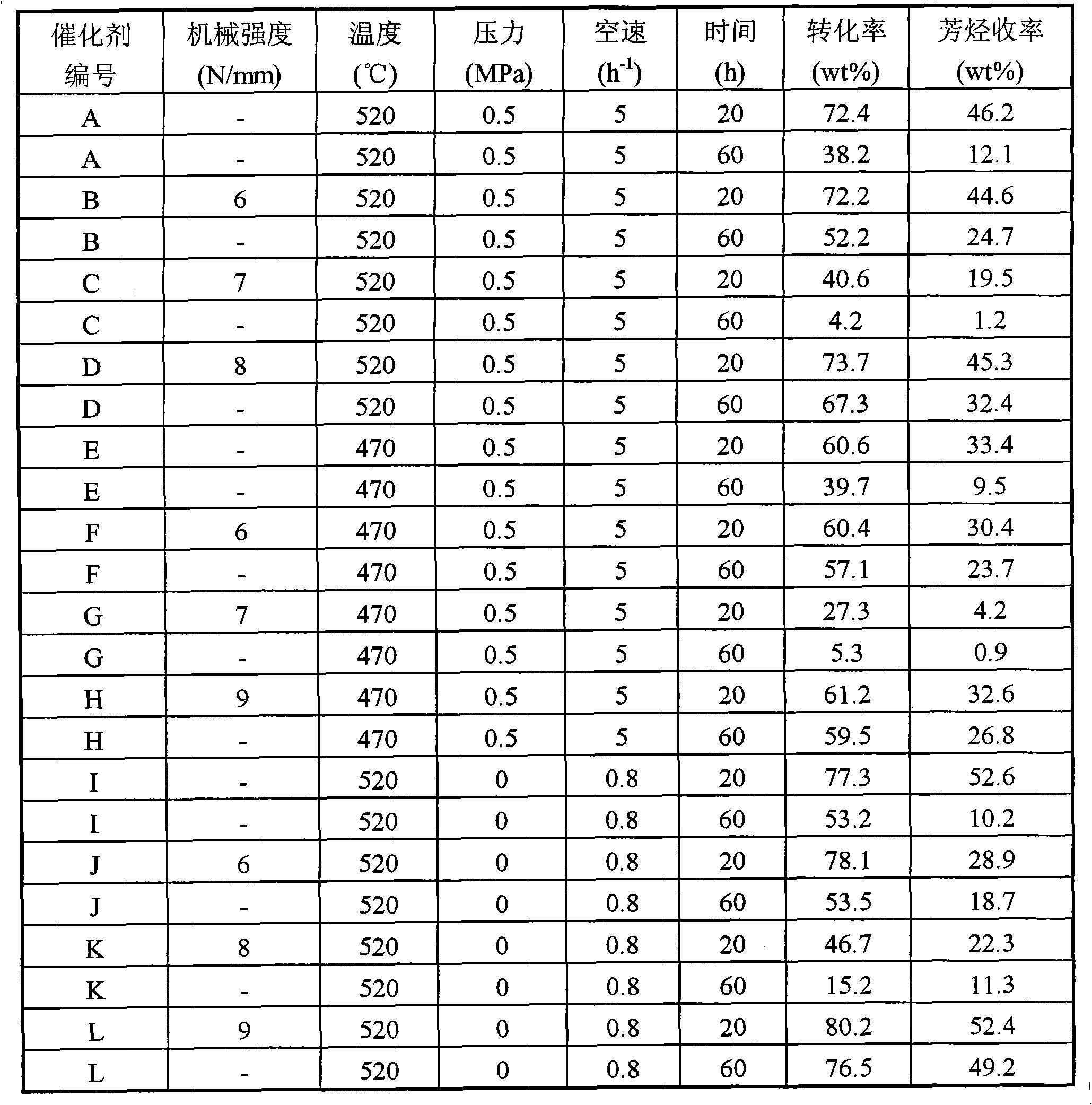Method for aromatizing low carbon hydrocarbon
A low-carbon hydrocarbon and aromatization technology, applied in chemical instruments and methods, hydrocarbons, hydrocarbons, etc., can solve problems such as poor stability, achieve optimal reaction stability, ease reactor switching and catalysts The effect of frequent regeneration and good technical effects
- Summary
- Abstract
- Description
- Claims
- Application Information
AI Technical Summary
Problems solved by technology
Method used
Image
Examples
Embodiment 1
[0022] The binder-free NaZSM-5 molecular sieve was calcined at 550°C for 4h to remove the template agent. After that, the obtained material was exchanged three times with 0.8 mol / L ammonium nitrate solution at 80°C, washed twice with water, and dried at 120°C for 10 hours to obtain ammonia-type molecular sieves. The ammonia-type molecular sieve was loaded with Zn metal species by the equal volume impregnation method, the loading amount was 2wt%, and then stood for 4 hours, dried at 120°C for 10 hours, and calcined at 550°C for 4 hours to obtain a catalyst, which was designated as catalyst D.
Embodiment 2
[0030] The binder-free NaZSM-5 molecular sieve (silicon-alumina ratio of 100) was calcined at 550°C for 4h to remove the template agent. After that, the obtained material was exchanged three times with 0.8 mol / L ammonium nitrate solution at 80°C, washed twice with water, and dried at 120°C for 10 hours to obtain ammonia-type molecular sieves. Ga and Ni metal species were loaded onto ammonia-type molecular sieves by equal-volume impregnation method, the loading amounts were 2wt% and 0.5wt%, respectively, and then stood for 4h, dried at 120°C for 10h, and calcined at 550°C for 4h to prepare the catalyst, which was designated as Catalyst H .
Embodiment 3
[0038] NaZSM-5 molecular sieve raw powder (silicon to aluminum ratio 400) was calcined at 550°C for 4h to remove the template. After that, the obtained material was exchanged three times with 0.8 mol / L ammonium nitrate solution at 80°C, washed twice with water, and dried at 120°C for 10 hours to obtain ammonia-type molecular sieves. Fe and Ni metal species were loaded onto ammonia-type molecular sieves by equal-volume impregnation method, with loading amounts of 1 wt% and 1 wt%, respectively, and then stood for 4 h, dried at 120 °C for 10 h, and calcined at 550 °C for 4 h to obtain a catalyst, which was designated as catalyst L.
PUM
 Login to View More
Login to View More Abstract
Description
Claims
Application Information
 Login to View More
Login to View More - R&D
- Intellectual Property
- Life Sciences
- Materials
- Tech Scout
- Unparalleled Data Quality
- Higher Quality Content
- 60% Fewer Hallucinations
Browse by: Latest US Patents, China's latest patents, Technical Efficacy Thesaurus, Application Domain, Technology Topic, Popular Technical Reports.
© 2025 PatSnap. All rights reserved.Legal|Privacy policy|Modern Slavery Act Transparency Statement|Sitemap|About US| Contact US: help@patsnap.com

